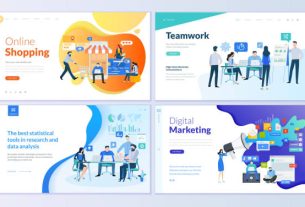Designing an eCommerce website involves various elements to ensure a seamless user experience and effective sales. Suggested by eCommerce developer, here are some key aspects to consider:
User Interface (UI) and User Experience (UX)
1. Intuitive Navigation: Ensure easy and clear navigation for users to find products effortlessly.
2. Responsive Design: Create a design that adapts well to various devices (desktop, mobile, tablet) for a consistent experience.
3. Clear Call-to-Actions (CTAs): Use prominent and engaging buttons for actions like “Add to Cart,” “Buy Now,” or “Checkout.”
4. Simple Checkout Process: Reduce the number of steps required for checkout to minimize cart abandonment.
5. High-Quality Visuals: Use high-resolution images and videos to showcase products from multiple angles.
Website Layout and Structure
1. Homepage: Highlight special offers, new arrivals, or top-selling products to grab attention.
2. Product Pages: Provide detailed information about products, including descriptions, prices, sizes, colors, and reviews.
3. Search and Filter: Implement a robust search function and filtering options to help users find products quickly.
4. Shopping Cart: Display clear summaries, and allow users to edit quantities or remove items easily.
1. Business-to-Consumer (B2C): This involves transactions between a business and individual consumers. When you buy products from an online retailer like Amazon or order food through a delivery app, that’s B2C e-commerce.
2. Business-to-Business (B2B): This type involves transactions between two businesses. It could be a manufacturer selling products to a retailer or a wholesaler supplying goods to a retailer. For instance, when a company purchases software or raw materials from another company online, it falls under B2B e-commerce.
3. Consumer-to-Consumer (C2C): This type involves transactions between individual consumers. Online marketplaces like eBay or Craigslist facilitate C2C e-commerce by allowing people to sell goods or services directly to other individuals.
These categories cover most online transactions, but some models blur these lines, such as peer-to-peer (P2P) lending platforms that involve individuals lending money to other individuals, which combines elements of both B2C and C2C.
Developing an e-commerce website involves several key steps and considerations. Here’s a broad overview:
1. Planning: Define the scope, target audience, products, and features of your e-commerce site. Consider user experience, navigation, and design elements.
2. Choose a Platform: Select an e-commerce platform that suits your needs. Popular options include Shopify, WooCommerce (WordPress plugin), Magento, BigCommerce, and custom-built solutions.
3. Design and Development: Create wireframes and design mockups. Develop the website using HTML, CSS, and JavaScript (possibly leveraging frameworks like React or Angular). Implement a responsive design for mobile users.
4. Product Catalog: Build a system to manage your product inventory, including product pages, categories, descriptions, images, prices, and variations.
5. Shopping Cart and Checkout: Implement a secure and user-friendly shopping cart system. Ensure a smooth checkout process with multiple payment options and secure payment gateways.
6. Security: Implement SSL certificates, encryption, and secure hosting to protect customer data, especially during transactions.
7. Optimization: Optimize the site for speed, SEO, and mobile responsiveness. Ensure that the website is easily accessible across various devices and browsers.
8. Testing: Thoroughly test the website for functionality, usability, and security. Check for bugs, glitches, and performance issues.
9. Launch: Once everything is tested and functional, launch your e-commerce website. Promote it through various marketing channels to attract customers.
10. Maintenance and Updates: Regularly update the site with new products, features, and security patches. Monitor performance, user feedback, and analytics to make improvements.
Dubai Website Design Experts rank the top website development agencies in UAE! Remember, user experience and security are critical in e-commerce. Make sure your site is easy to navigate, loads quickly, and offers a secure shopping experience to build trust with your customers.



